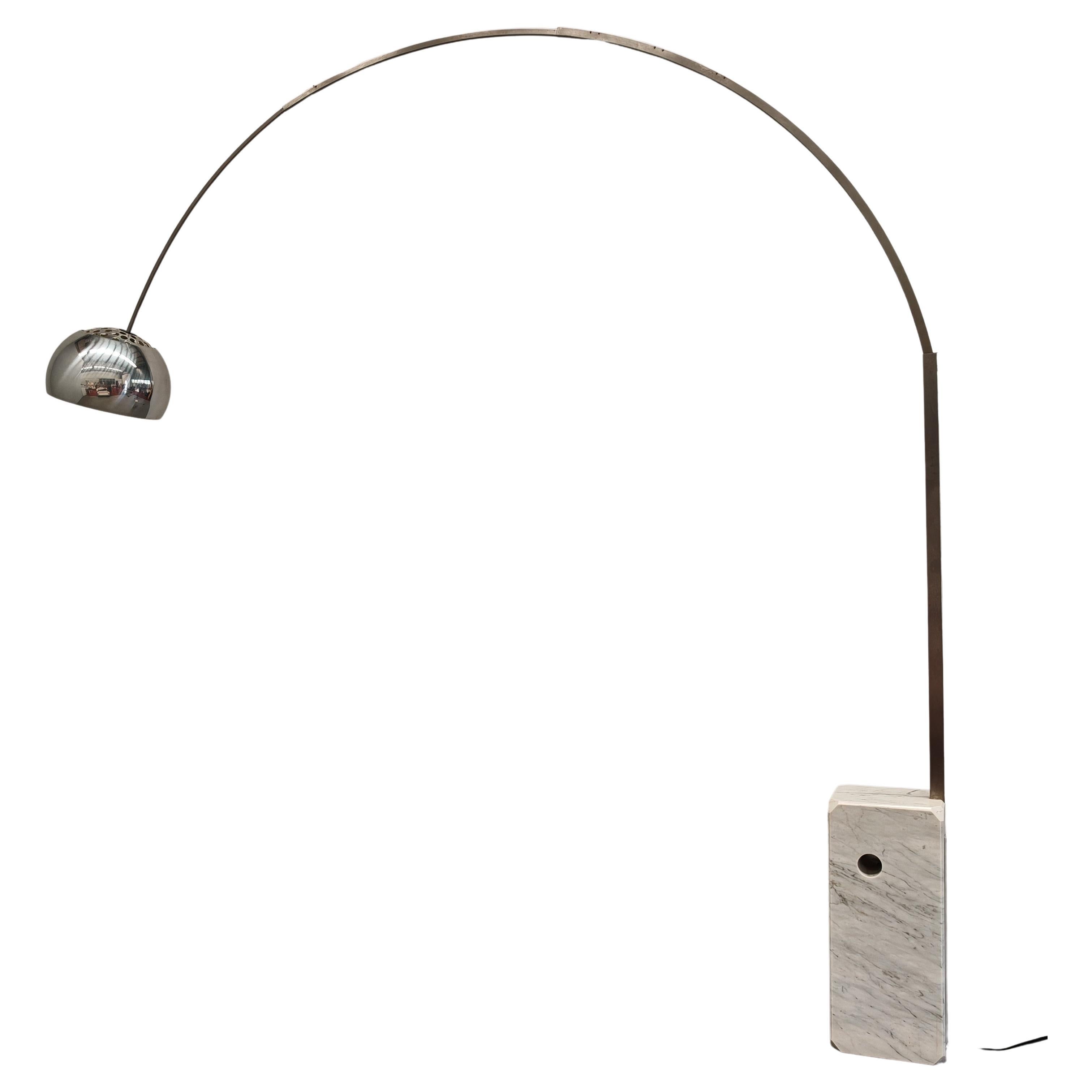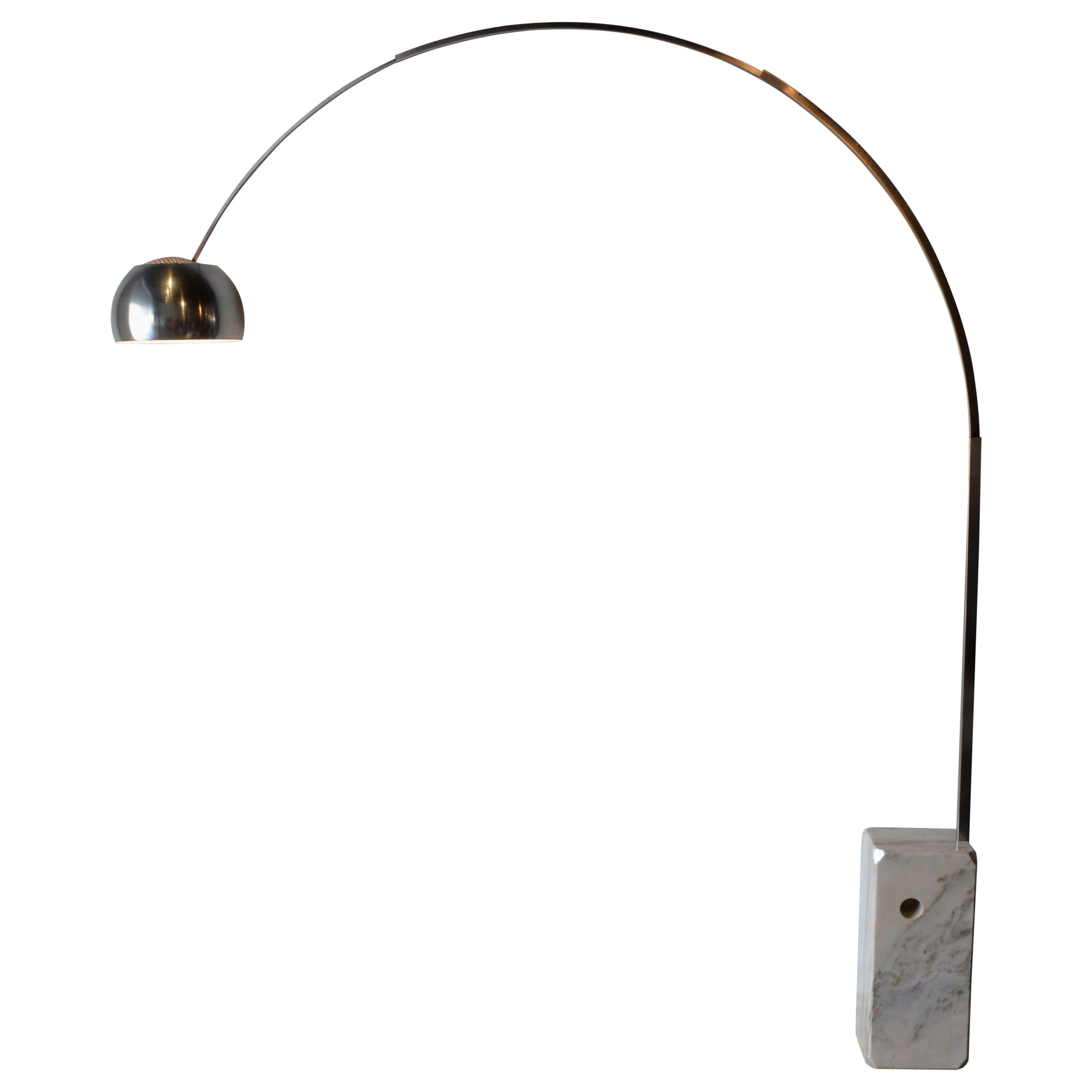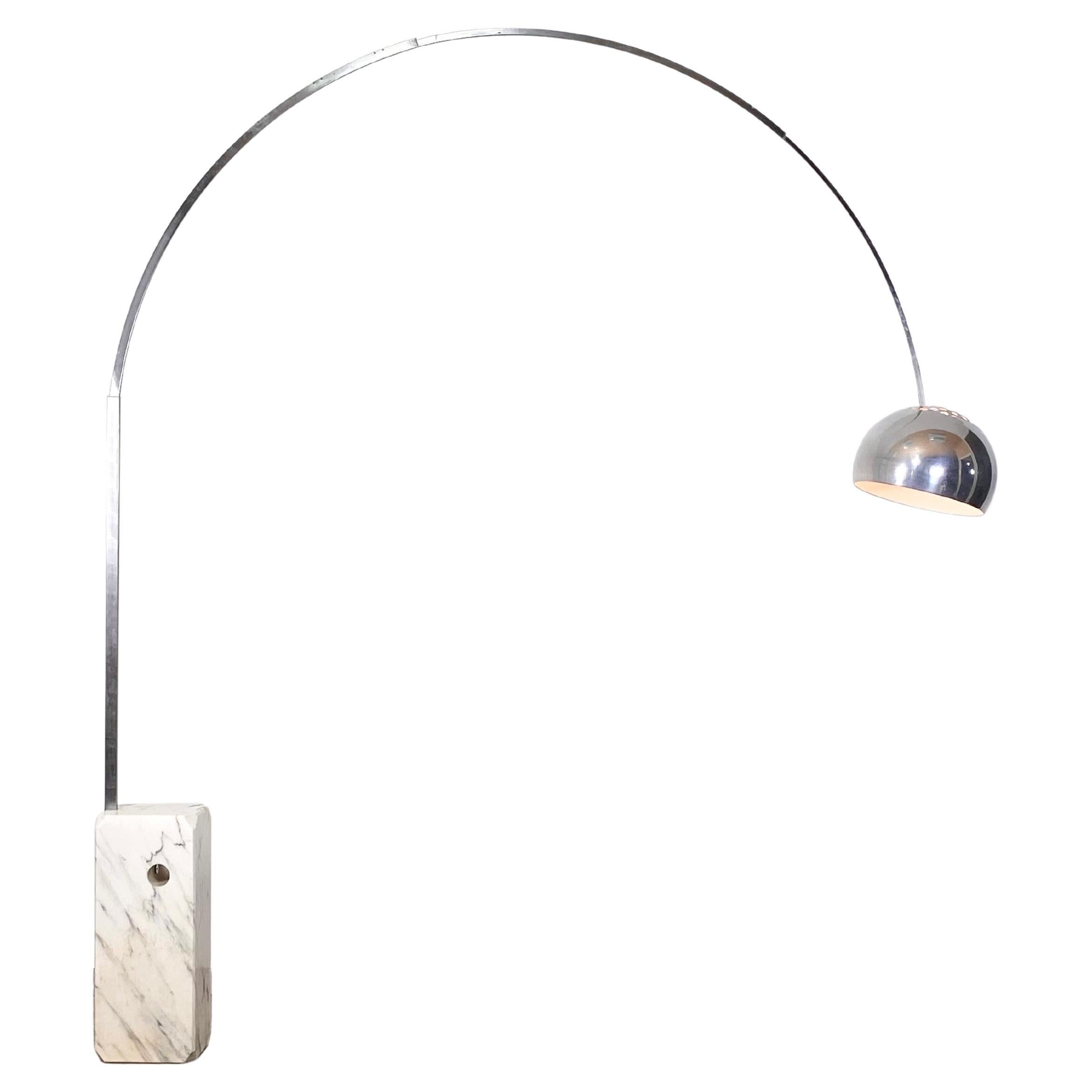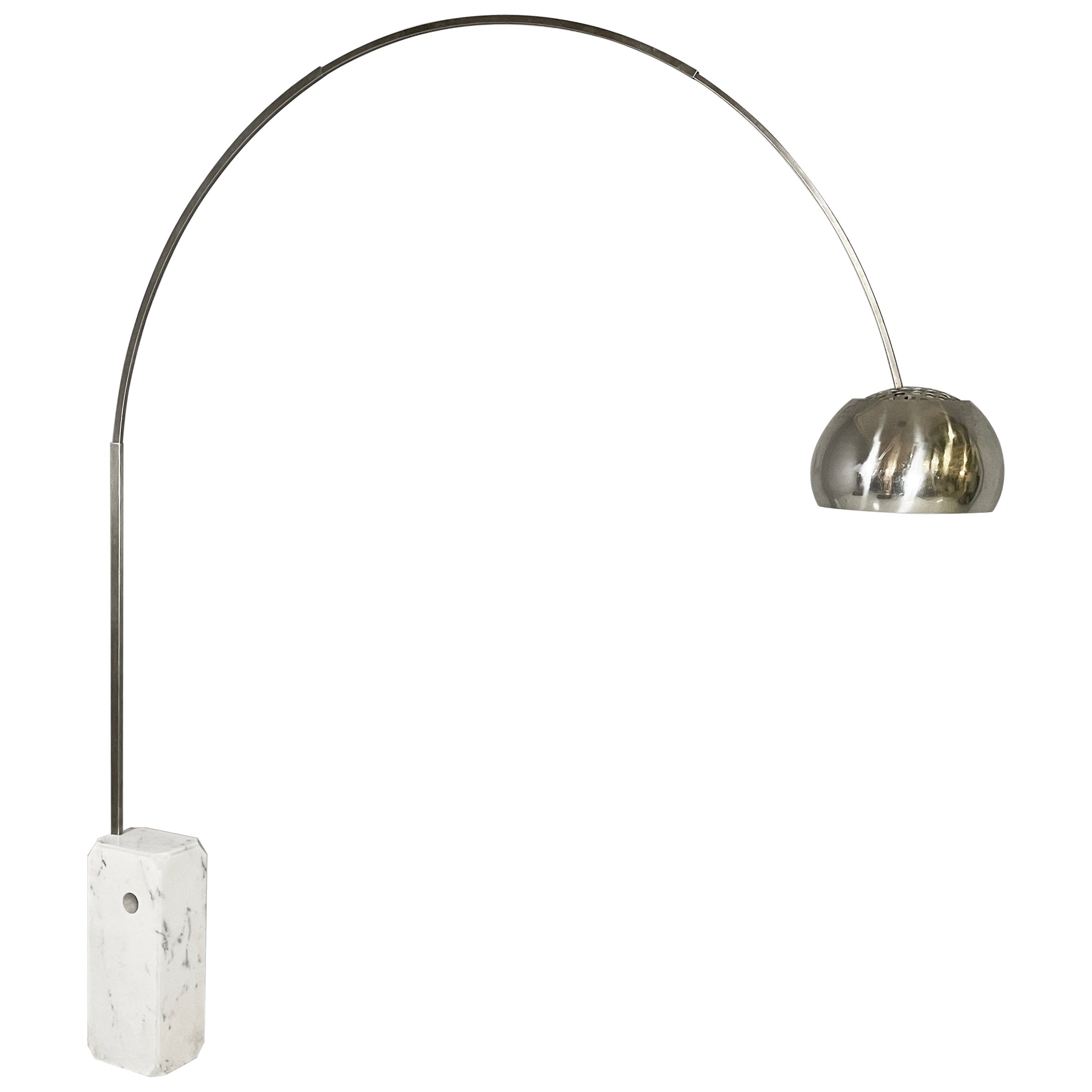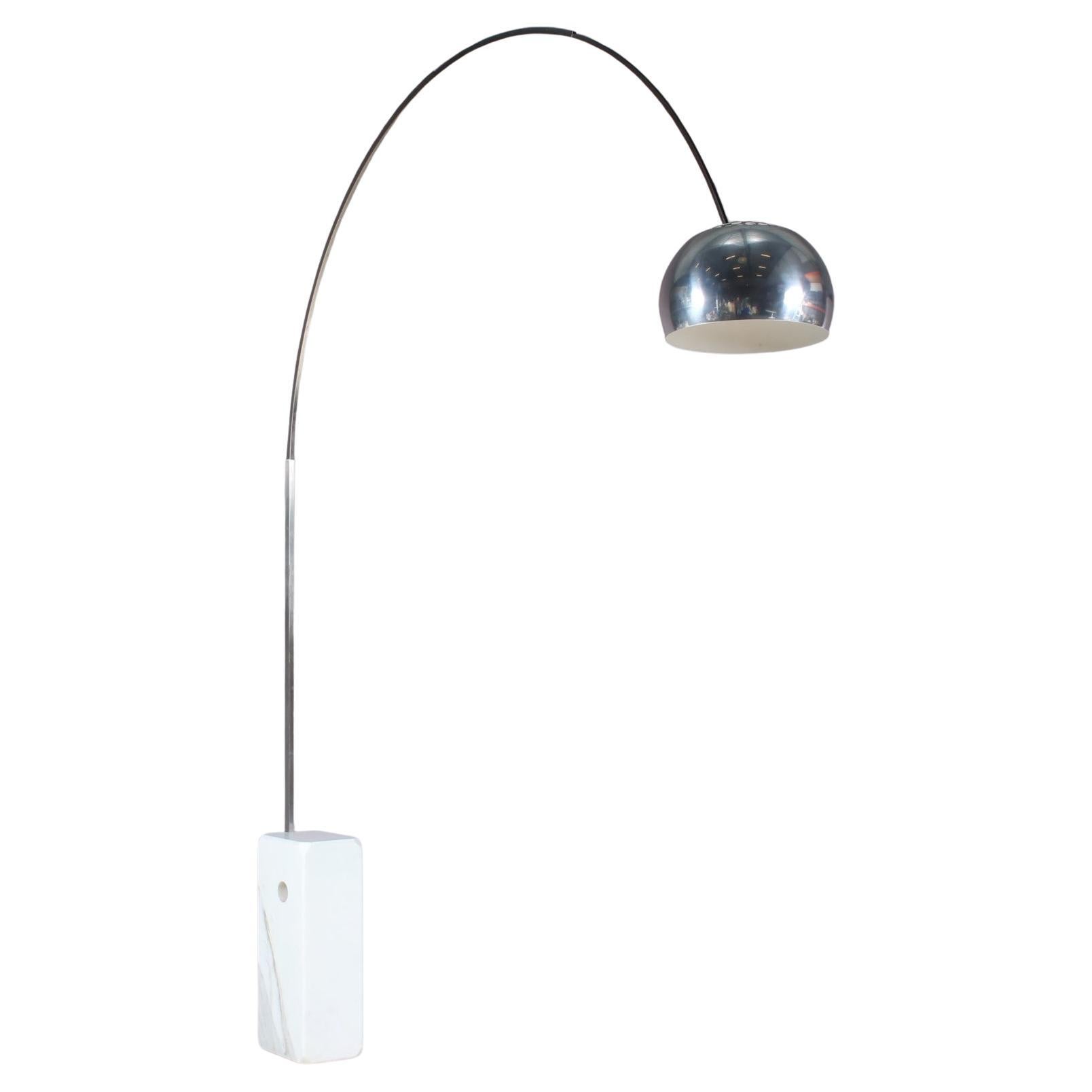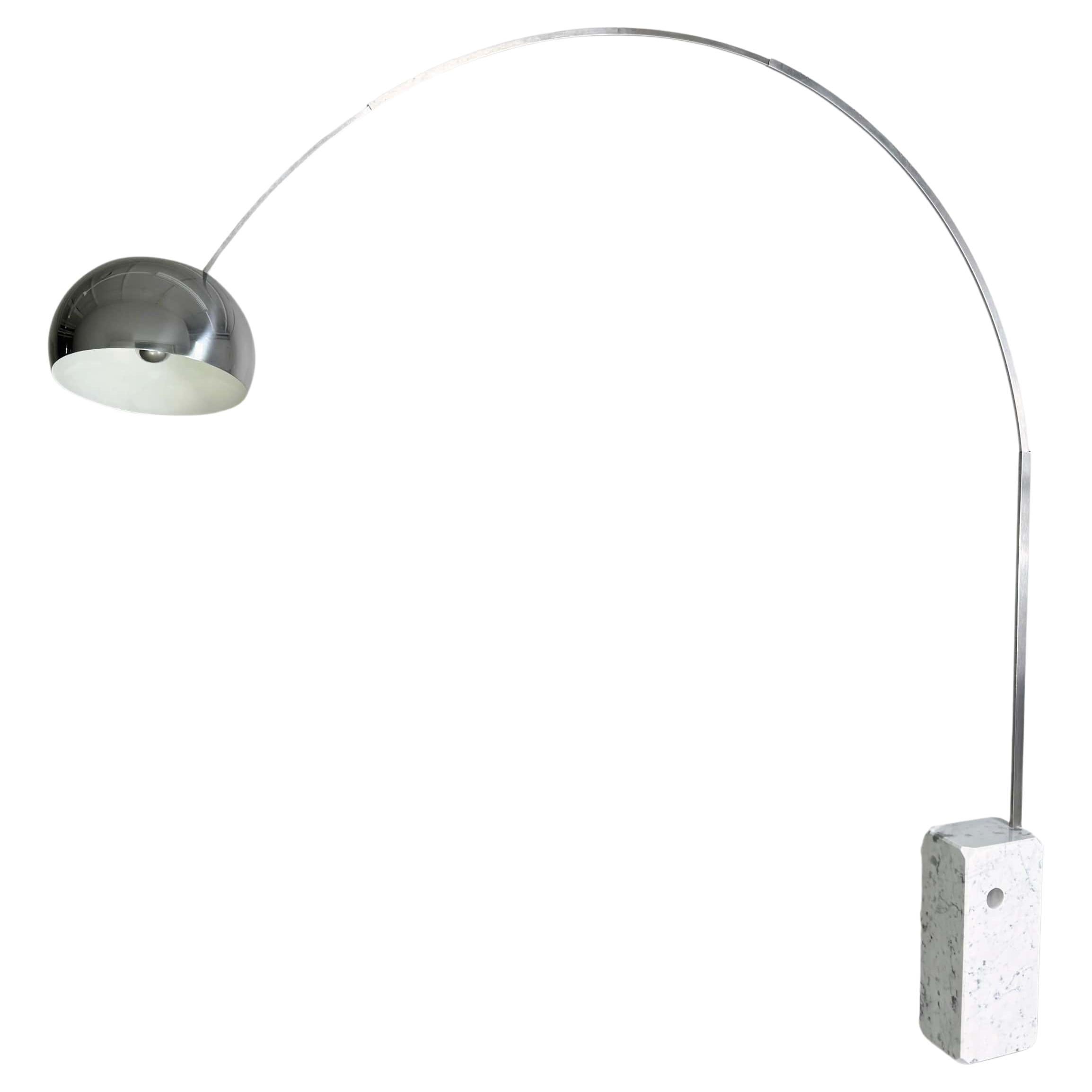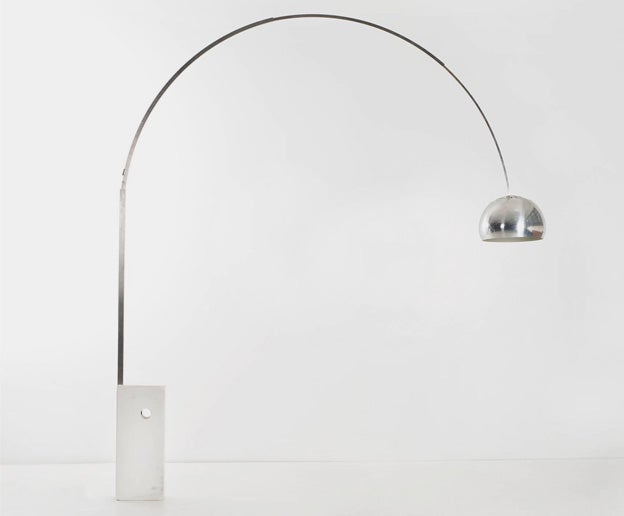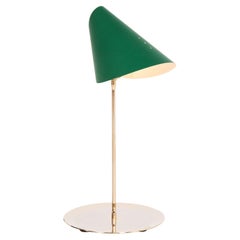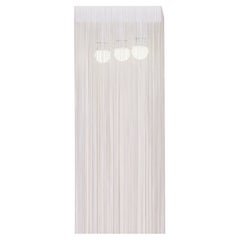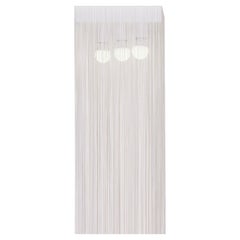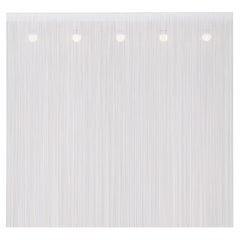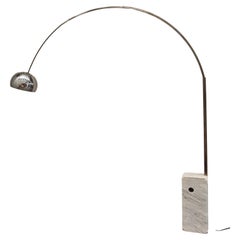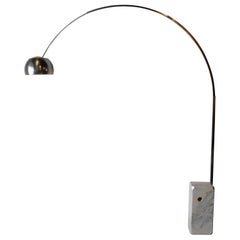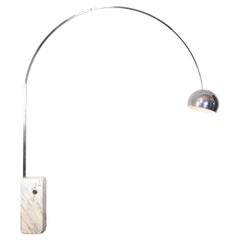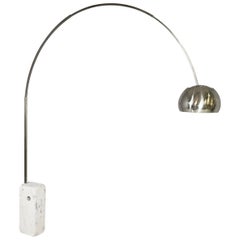Arco Lamp by Achille & Pier Giacomo Castiglioni for Flos, 1962
About the Item
- Creator:Achille & Pier Giacomo Castiglioni (Designer)
- Design:
- Dimensions:Height: 94.49 in (240 cm)Width: 86.62 in (220 cm)Depth: 12.6 in (32 cm)
- Power Source:Plug-in
- Lampshade:Included
- Style:Mid-Century Modern (Of the Period)
- Materials and Techniques:
- Place of Origin:
- Period:
- Date of Manufacture:1962
- Condition:Wear consistent with age and use.
- Seller Location:Ozzano Dell'emilia, IT
- Reference Number:1stDibs: LU8430244181722
Arco Lamp
It was a humble street light that inspired Achille Castiglioni (1918–2002) and his brother Pier Giacomo Castiglioni (1913–68) to design their Arco lamp. The two men, along with their eldest brother, Livio, were the sons of prominent Milanese sculptor Giannino Castiglioni, and all became trained architects. Achille graduated from the acclaimed Polytechnic University of Milan in 1944 and joined Pier Giacomo and Livio in the design studio they'd opened with Luigi Caccia Dominioni. With large architectural assignments hard to come by, the Castiglionis focused on small-scale projects. At the core of their design philosophy was problem-solving, creating objects that fulfilled consumer needs. Their motto was: “Start from scratch, stick to common sense, know your goals and means.”
With functionality a primary concern, the Castiglionis produced pieces inspired by the “readymades” of artist Marcel Duchamp. The Arco lamp was born out of a desire to create a fixture that illuminated like pendant lighting but didn’t require drilling into the ceiling and that could be moved as its owner’s interior evolved.
The initial Arco lamp, designed in 1962, had a marble base (weighing 110 pounds), a chrome ball shade and a long curved steel arm that enabled light to be projected from nearly eight feet up, as if from a chandelier hung overhead. In another ingenious touch, the Castiglionis drilled a hole in the marble base through which a broomstick could be guided to serve as a handle so that two people could move it.
The same practicality is evident in the other famed lighting pieces — including the Snoopy and Taccia table lamps — that Achille and Pier Giacomo designed for FLOS. The brothers began their relationship with the Italian lighting company in 1960, and it continues to make their signature pieces today.
Achille & Pier Giacomo Castiglioni
Milanese industrial designer-architects Achille and Pier Giacomo Castiglioni (1918–2002; 1913-68) created some of the most iconic furniture designs in the world, particularly those that originated in the realm of mid-century modern lighting.
In the late 1930s, after graduating from the acclaimed Polytechnic University of Milan, Pier Giacomo opened a design studio with his brother Livio and likeminded architect Luigi Caccia Dominioni. Achille, also a graduate of Milan Polytechnic, joined the group after completing his studies in 1944. The era’s architects were encountering difficulty in their attempts to secure building commissions, so the group focused on designing practical everyday objects such as the Model 547, a tabletop radio for Phonola that was encased in Bakelite.
The Castiglioni brothers produced wildly popular and innovative designs throughout the 20th century. While Livio departed the practice in 1952 to pursue lighting design and sound technology on his own, Pier Giacomo and Achille would continue to collaborate on a wealth of projects in the ensuing years.
Vintage furniture collectors may be familiar with Livio and Italian designer Gianfranco Frattini’s serpent-like Boalum lamp, while Achille’s Taraxacum hanging lamp — created for FLOS with sprayed plastic polymers originally intended for military use — as well as the Arco, Snoopy and Toio lamps, which were the result of the collaboration between Pier Giacomo and Achille, are milestones in modernist lighting design.
Also for FLOS, Pier Giacomo and Achille created a series of metal frames that, wrapped in the polymer, became floor lamps (Gatto) or pendant lights (Viscontea and Taraxacum), all released in 1960. The Gatto floor lamp takes its name from the Italian word for “cat” and the inspiration for its aesthetic from lighting that George Nelson developed for legendary American furniture manufacturer Howard Miller during the 1940s. Around the same time, the designer Tobia Scarpa (son of the famed Italian architect Carlo Scarpa and one-half of the widely revered postmodern husband-and-wife design duo Afra and Tobia Scarpa) created a floor lamp called Fantasma (1961) using the polymers technique. FLOS continues to make the Castiglionis’ innovative pieces today.
In addition to their provocative lighting works, Pier Giacomo and Achille also created stereo systems, decorative objects, seating, tables and other items for the likes of Brionvega, Alessi, Zanotta, Kartell and more.
Find vintage Achille and Pier Giacomo Castiglioni floor lamps, table lamps, pendants, seating and other furniture on 1stDibs.
- ShippingRetrieving quote...Shipping from: Ozzano Dell'emilia, Italy
- Return Policy
More From This Seller
View All21st Century and Contemporary Italian Mid-Century Modern Table Lamps
Brass
21st Century and Contemporary Italian Mid-Century Modern Chandeliers and...
Metal
21st Century and Contemporary Italian Mid-Century Modern Chandeliers and...
Metal
21st Century and Contemporary Italian Mid-Century Modern Chandeliers and...
Metal
21st Century and Contemporary Italian Mid-Century Modern Chandeliers and...
Metal
21st Century and Contemporary Italian Wall Lights and Sconces
Metal
You May Also Like
Late 20th Century Italian Mid-Century Modern Floor Lamps
Marble, Aluminum, Steel
Late 20th Century Italian Mid-Century Modern Floor Lamps
Carrara Marble, Stainless Steel
Vintage 1960s Italian Post-Modern Floor Lamps
Marble, Steel
Vintage 1960s Italian Mid-Century Modern Floor Lamps
Marble, Metal, Steel
Vintage 1970s Italian Mid-Century Modern Floor Lamps
Marble, Metal
21st Century and Contemporary Italian Post-Modern Table Lamps
Marble, Stainless Steel
Read More
We Dare You Not to Smile at These Whimsical Italian Designs
Make anyplace your happy place with Italian furniture at its subversive best.
Rooms We Love: 11 Splendid Living Rooms
Common wisdom used to declare the kitchen the hub of the house. These days, the living room seems to have assumed the role of domestic focal point. Unlike the Victorian parlor, stiffly furnished and reserved for guests, today’s living room is a central place for reading, conversation and, well, living, with furnishings that lend themselves to both casual lounging and elegant entertaining.
